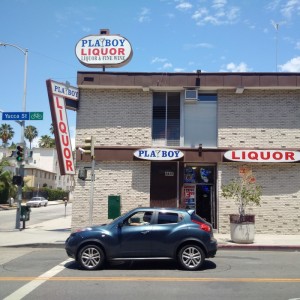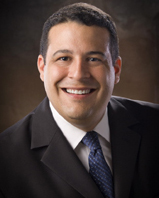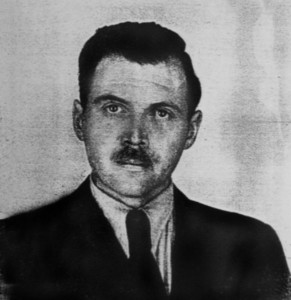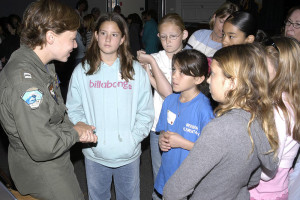

Things began to take an interesting turn in March, though. That’s when Kerry Morrison, unconstrained by any Institutional Review Board, by any ethical guidelines for the use of human subjects, by any standards, professional or amateur, by any method, scientific or humane, by any laws, human or divine, written or unwritten, criminal or civil, announced yet another experiment in the social-laboratory-for-the-criminalization-of-homelessness gestalt-slash-weltanschauung that the HPOA has overlain upon our beloved Hollywood in its 20 years of madcap malcriado misrule.2
On March 12, 2014, Kerry Morrison wrote to Jack Yu, Warren Aguiling, and Hyun Joe of Pla-Boy Liquors, CVS, and 7-11 respectively (the ones near Cahuenga Blvd. and Yucca Street) with more characteristic craziness:
Gentlemen, thank you for responding favorably to our efforts to curb the incidence of drinking in public and public intoxication in the Hollywood Entertainment District. And thank you for your interest and cooperation in participating in a one month pilot to refrain from selling the cheap alcohol that seems to fuel these problems.
It’s worth reading the whole email, at least as an exemplar of Kerry Morrison’s weirdly obsessive focus on the entirely expected fact that the homeless of Hollywood have drinking patterns like those of other Americans, and, to within a rounding error of certainty, that match those of the HPOA Board of Directors as well. In any case, evidently this experiment, with the homeless of Hollywood acting as unwitting subjects, went forward beginning on April 1, 2014:
Hi Joe, Jack and Warren,3
I will follow up with a personal phone call, but I wanted to confirm that we are proceeding with our one-month moratorium on the sales and stocking of the inexpensive alcohol products that we have previously discussed.
- CVS: Gran Legacy Vodka, $3.99/375 ml.
- 7-11: 211 Steel Reserve malt liquor, $1.99/24 oz.
- Pla-Boy: Taaka Vodka and Crystal Palace Vodka, $2.65/200 ml.
This will start April 1—and thank you for cooperating. I informed our committee about this earlier this week—and the LAPD, City Attorney and city council office3 is [sic] quite pleased that you are willing to work with us to see if this curbs some of the negative behaviors in this corner of the business improvement district. Please do not reveal that this is just a one-month experiment to your customers; we do not want to create the expectation that they can simply return on May 1 and everything will be back to normal. What we are really trying to test here is whether there is some behavior change, or migration away from the Cahuenga/Yucca area to another little section of the business district

What’s even weirder about this experiment than the amateurish and ethically bankrupt meddling in the social sciences is that the whole thing is doomed to failure by the natural laws of the market. If there are customers for cheap vodka in small bottles, then cheap vodka in small bottles is going to be sold. One would expect a bunch of real-estate zillionaires and their paid flacks like Kerry Morrison to understand this, and perhaps they do, just like the generals and the soldiers in the war on drugs certainly understand that they’re not going to win and that winning is not the point. The point in both cases is the money to be earned and the social control to be gained. No other motive really makes sense, either in Hollywood or in war-on-drugs-landia, because no other goals are being, have been, nor shall ever be attained by such futile battles against the iron law of supply and demand. Maybe Kerry Morrison and her HPOA buddies are in on this or maybe they’re what Albert Einstein was known to refer to as “useful idiots.”5 It’s probably not possible to decide which.
Anyway, the discussion moves on into May 2014 when Gary Benjamin, good-urbanism-liking guy from CD 13, sends Kerry some info on ways to forbid single-serving alcohol sales in the BID like they’ve evidently done around Staples Center. Blah blah blah and obviously it hasn’t happened, thank goodness. Then, in June 2014, Jackie Lawson has taken over from Andre Quintero as Hollywood Neighborhood Prosecutor. Unlike Andre, though, Jackie’s gonna get more hands-on with the BID constituents whom she sees more as her clients than as ordinary citizens like us and thee. She writes to Kerry thusly:
Hi Kerry,
Hope you are enjoying the weekend.
I know you are aware of the El Cajon alcohol sales ordinance but don’t know if you’ve read it. I did and think it’s an interesting ordinance to look at for LA. I forwarded it to CD 4 and CD 13 to review.
What do you think? According to the news reports it’s the most restrictive in the U.S.
El Cajon Municipal Code (El Cajon, California)
Re: Alcohol sales
See — Title 17 Chapter 17.210.100
http://qcode.us/codes/elcajon/
Just something to think about.
Jackie Lawson — Deputy City Attorney
You read that right. A deputy city attorney of the city of Los Angeles is suggesting to a bunch of zillionaires that we try to be more like freaking El Cajon, California, a municipality hitherto known only for being pornographically name-checked in a Mojo Nixon song.6 Here’s a link to the law they’re talking about. The part they’re probably jeansy-creamsiest about is this little slab of class warfare right here:
a. No wine shall be displayed, sold or given away in containers of less than 750 milliliters, except multipack containers of wine, and multipack wine coolers containing no more than six percent alcohol by volume.
b. No wine shall be displayed, sold or given away with an alcoholic content greater than 15 percent by volume unless in corked bottles and aged at least two years.
c. No distilled spirits shall be displayed, sold or given away in containers of less than 375 milliliters, except pre-mixed cocktails.
d. The display, sale or distribution of 50 milliliters “airline bottles” and 375 milliliters “hip flask” containers is prohibited.
e. No beer, ale or malt liquor shall be offered for sale in a container with a volume greater than 32 ounces. This restriction is not intended to prohibit the sale of such beverages in kegs or other types of containers, with a volume of two or more gallons, which are clearly designed to dispense multiple servings.
f. No sale or distribution of alcoholic beverages shall be made from a drive-up or walk-up window.
g. No display, sale or distribution of beer or wine, wine coolers or similar alcoholic beverages shall be made from an ice tub, barrel or similar container.
h. All display of alcoholic beverages shall be no closer than five feet from the store entrance.

- There’s certainly more to this story than we have documentation of. Our correspondent is seeking further information and we’ll, de natch, let you know when and if it’s made available to us.
- We like to throw in a little way-over-the-top hysteria just before the break, let us know is anyone still reading. Sorry if we gave you heart palpitations. If it’s any comfort, we’ve got ’em worse, probably.
- Kerry really doesn’t seem to like the Oxford comma. Take a look here to see why it’s essential. Furthermore, we’d like to note that everything on this blog is dedicated to our parents, Kerry Morrison and God!
- These are the 1981 guidelines, which are much, much more simple than the guidelines currently in place, although they say essentially the same thing. One can find the current guidelines somewhere on the APA website.
- Not really. The phrase is often attributed to Vladimir Lenin (полезные дураки), but almost certainly wrongly so. An accurate attribution is probably unattainable at this point.
- “A librarian from El Cajon / is checking out my love bone.” The 80s, man, we’re sorry they’re gone.
Image of Pla-Boy liquors is ©2015 MichaelKohlhaas.org. Image of Andre Quintero was taken from the website of the city of El Monte here. They do assert a copyright in the image, but of course the image is a public record. It makes sense to us that public agencies can’t seriously defend copyrights in public records but, not being lawyers, have had to learn, sometimes the hard way, that sense and the law, while having a nonempty intersection, do not overlap in their entireties. Thus we’re also claiming fair use of this image. We’ll let you know if anything comes of it, OK? Image of Josef Mengele is in the public domain according to Wikimedia, from whom we got the file, due to some stuff we don’t have the attention span to follow closely involving mid-20th-century copyright laws in Argentina, where the dude was in hiding until shortly before the picture was made by the apprehending agency. Image of navy lady in El Cajon is public domain for the usual government reasons and we got it via Wikimedia.
